How to reach here:
By Air: The nearest airport to the place is the Bagdogra Airport (124 km away) in the town of Siliguri, West Bengal.
By Rail: Gangtok does not have a railway station, the closest one being at New Jalpaiguri in West Bengal, nearly 150 km away.
Best time to visit: September to June.
Languages spoken: Nepali, Sikkimese, Bhutia, Lepcha, Hindi, English, Limbu, Newari, Rai, Gurung, Mangar, Sherpa, Tamang, Sunwar.
Must eat: Ningro (fern rings), Shisnu (nettle soup), Phing (glass noodles) and Churpi (yak cheese) cooked with a lot of chillies.
Famous Restaurants: Kyi-Tsel, Arthur's Restaurant, Cafe Culture, 9'INE Native Cuisine, Gangtalk, Cacao.
Places you must visit:
Tsongo Lake also known as Changu Lake is about 50 feet deep, 1 km long and is situated at the elevation of 12,000 feet. The snow that melts and gushes down the mountains forms this lake. The mystic combination of nippy, placid Lake Side in the outstanding harmony with bounteous surrounding beauty makes this place enchanting vicinity. Primulae flowers, poppies and other pristine alpine vegetation in abundance ornament the borders of the lake. Tsongo Lake usually freezes during winter. Natives believe that in olden days Buddhist Monks used to predict the future by looking at the stature and color of the lake. Natives worship this lake as their deity. On the banks of the Tsongo Lake is set up a small Shiva Temple.Tsomgo Lake is located in the restricted area for which tourists require an Inner Line Permit. This permit can be obtained from the Police through the travel agent or Tourism Department.
Himalayan Zoological Park is one of the best places for wildlife lovers. Situated in Bulbuley, the park has been established with the aim to preserve wildlife in natural habitat. Sprawling over an area of 205 hectares, the Zoological Park is at an altitude of 1,780 meter from where beautiful view of Mount Kanchenjunga can also be enjoyed.It is the first park of its kind in the entire north-eastern part of India, which was established in 1991. The animals residing in this park are kept in replicated natural conditions. Most part of this park is covered with forests of Red Panda, Blue Sheep, Musk Deer, Barking Deer and Himalayan Black Bear.



Deer Park also known as Rustamji Park is home to several species of Deer, this park was named after Rustamji. He was amongst one of the Dewans of the Chogyal of Sikkim. Rustamji, acclaimed himself to be the author of book 'Enchanted Frontiers'.Established in the late 1950's, this park acts as a sanctuary for the different species of deer that are brought from the neighbouring states and other parts of Sikkim. In addition, there are few cages located inside this park that have animals like Himalayan Bear and Red Pandas.The Deer Park also houses a statue of Lord Buddha standing erect and preaching the noble truths to the followers. This entire scene depicts the reminiscent of first sermon of Lord Buddha at the Deer Park located at Sarnath in Uttar Pradesh. It is also believed that this park was constructed to celebrate the reincarnation of Lord Buddha as a musk deer. In the front of this statue, there is a butter lamp, which continuously glows and is encircled by the most beautiful flowers.

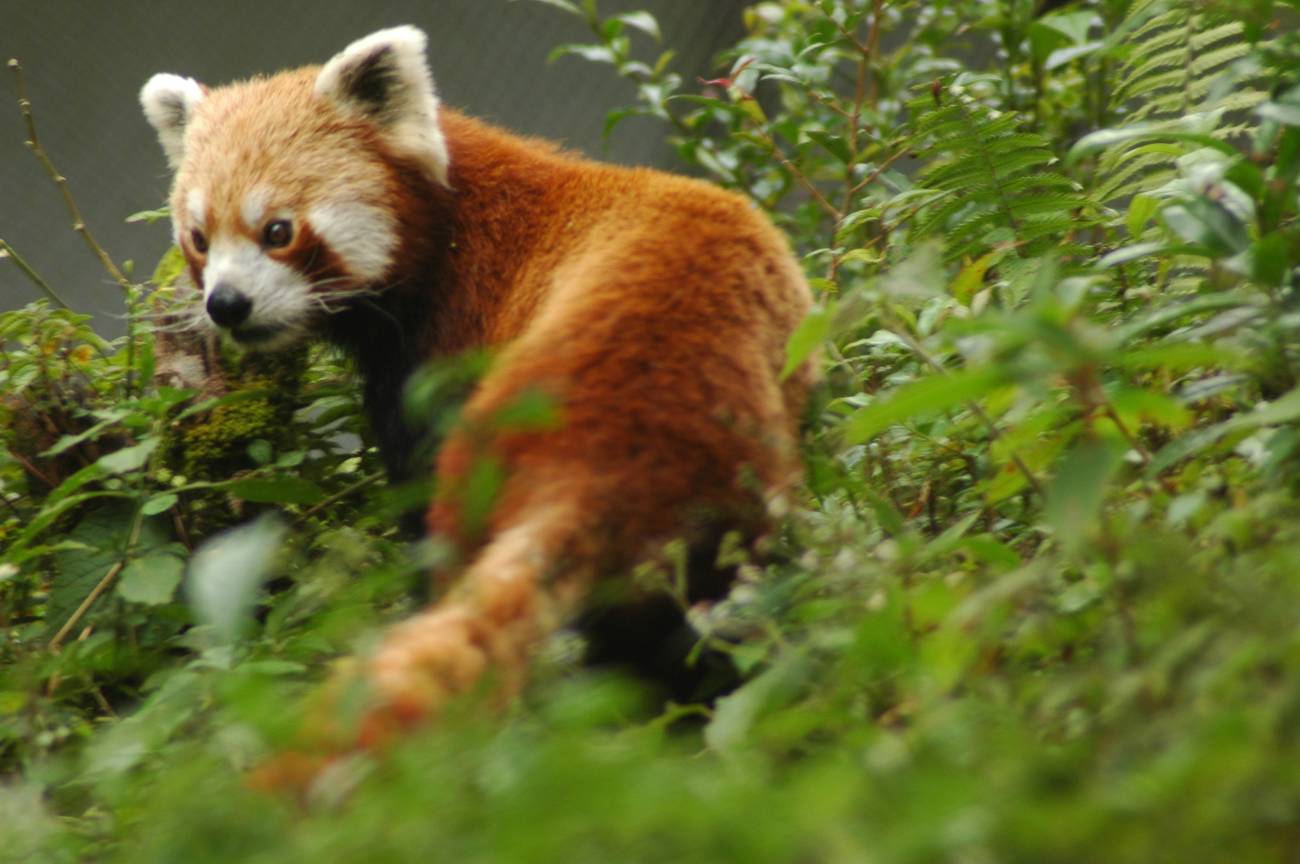
Enchey Monastery meaning solitary temple, was built in 1909 and is a 200 year old monastery. The monastery is built on the spot, which is believed to be blessed by Lama Druptab Karpo. He was a tantrik master who was known for his flying powers. The monastery is also an important seat of the Nyingma sect of Tibetan Buddhism.According to a legend, it is believed that Lama Druptab Karpo constructed a small hut on this site, where he landed after his return from Maenam Hill. However, the present structure of the monastery was constructed in the shape of Chinese Pagoda during the reign of Sikyong Tulku (1909-1910).The monastery is considered sacred as it is believed that the protecting deities, Khangchendzonga and Yabdean reside in this monastery. According to a legend, the spirits of the Khangchendzonga, Yabdean and Mahakala are subdued by Guru Padmasambhava inside this monastery. Due to this belief, the monastery gained religious significance, and devotees visiting the place believe that all their wishes will be fulfilled by powerful deities.On the top of the monastery is a shining golden cupola. The walls of the monastery and the prayer hall have paintings and murals of four religious kings. In addition, paintings of idols of the four cardinal directions along with the galaxy of Mahayan Buddhist can also be seen on the walls. The monastery also houses 90 monks along with a large collection of masks, which are used during the annual ritual rites.



Kyongnosla Alpine Sanctuary ranges from altitudes between 3,292 and 4,116 metre. Due to variance in altitude, the sanctuary boasts a wide variety of flora and fauna.This sanctuary comprises flora of rare and endangered species, which include tall juniper, ground orchid, rhododendron and silver fir. In addition, the sanctuary is also a home to different species of irises, wild strawberries, poppies, primulas, orchids, gentians, rare panax and rhododendron.Medicinal plants such as Nilo bikh' (Aconitun Ferox), 'Kutki' (Picrorhiza Scrophulariflora) and 'Jatamasi' (Nardostachs Graandiflora) can also be found in this sanctuary. Before the arrival of winter, the first snowfall in the region is anticipated by Polygonum, which is the last flower that blooms. Owing to the presence of dense bushes of bamboos, the place is a perfect home for Red Panda.Some of the species of animals that are found in this sanctuary include Serow, Musk Deer, Goral, Himalayan Black Bear, Blood Pheasant, Leopard, Lesser Cats and Himalayan Marmot. In addition, the sanctuary is also home to Satyr Tragopan, Common Langur, Tibetan Fox, Martens Weasel and Impeyan Pheasant.

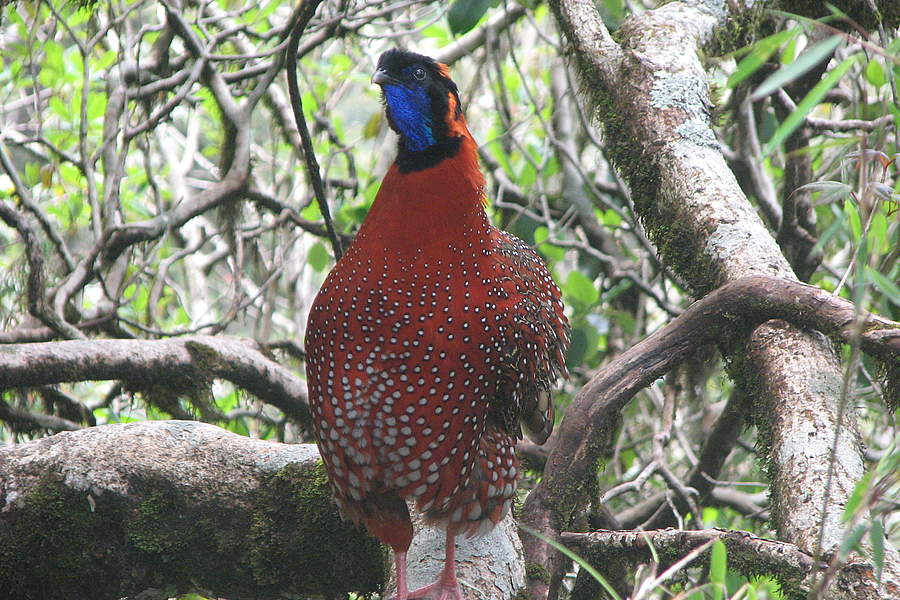

Pemayangtse Monastery is one of the most famous pilgrimage centres. This monastery belongs to the Nyingma order and is situated at Gyalshing, located in West Sikkim. In addition, all the other monasteries belonging to Nyingma orders are located in Sikkim are subordinates to Pemayangtse Monastery.his monastery was constructed in 17th century AD by Lhatsun Chenpo. Initially, it was a small Lhekhang. During the rule of third Chogyal Chakdor Namgyal, the monastery was extended and reconstructed by the third reincarnate of Lhatsin Chenpo, Jigme Pawo. At present, there are around 108 monks in this monastery, most of which are from leading Buddhist family residing in Sikkim.There are several religious idols, images and objects of worship present inside the monastery, most of which are precious and known for their ancientness. In addition, a wooden sculpture is placed on the top floor of this monastery. This wooden structure represents the Maha Gurus Heavenly Palace, which is known as Sanghthokpalri. It took around 5 years to complete this sculpture and was accomplished by the Dungzin Rimpoche.


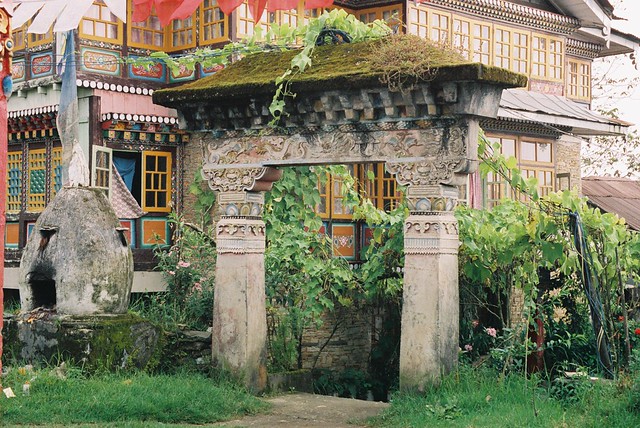

Nathula Pass, located at a distance of 56 km from Gangtok, is a pass on the Indo-Chinese border. Serving as a trade link between India and China, this park also once served as the main access for Sikkim-Tibet trade. Popularly known as the Silk Route, this pass is at an elevation of 14,450 feet and is rich in diverse alpine flora and fauna. The Nathula Pass is divided into terms 'Nathu' and 'La', which mean 'listening ears' and 'pass' respectively.he trade route was closed down in 1961, as a result of the war between India and China. However, in 2006, the trade between the two countries resumed again after conciliation. Passing the Tsomgo Lake on its way, this pass is one of the highest motorable roads in entire India. Covered with snow for most parts of the year, a special permit is required to visit this pass.At present, tourists are permitted to visit the pass on Wednesday, Thursday, Saturday and Sunday. In addition, the Nathula Pass also reduces the travelling distance to some of the major Hindu and Buddhist pilgrimage sites such as Lhasa and Mansarovar Lake.This pass is also amongst three border posts that connect China and India. The other two border posts are Shipkila (Himachal Pradesh) and Lipulekh (Uttarakhand).


Ganesh Tok, a small temple, is located next to the television tower on the small hill nestled on Gangtok-Nathula road, the temple is dedicated to Lord Ganesh. This temple is so small in size that at a time, it can only accommodate one person. In addition, one needs to crawl to get inside this temple.Besides its size, the temple is also known for the bird's eye view of several places such as the Gangtok town, the mount Kanchenjunga and the Raj Bhawan Complex. In addition, there is small place located close to this temple, which is known as Smriti Van. In this place, the devotees on the behalf of their loved ones can plant saplings.

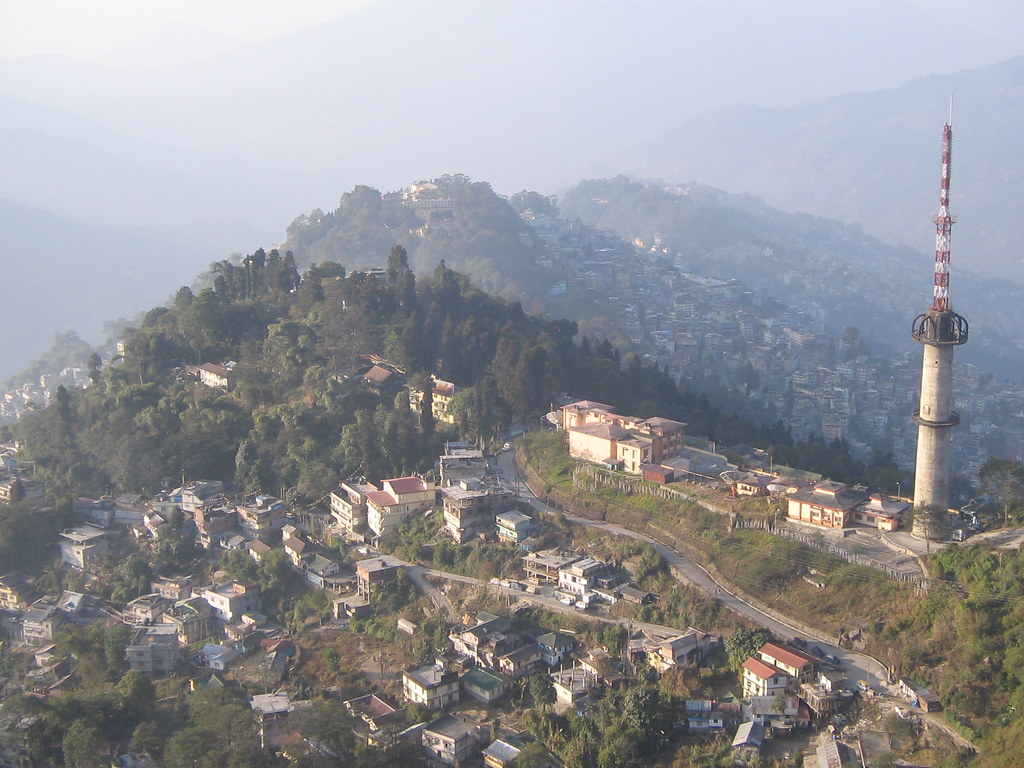

Rumtek Monastery is one of the most important sites for almost every Buddhist. This monastery was originally built in the 16th century, under the supervision of Wangchuck Dorge and with the financial assistance of the fourth king of Sikkim.However, in the 20th century this monastery was devastated by fire. Later in 1960s, an entirely new ministry was rebuilt uphill the original Rumtek Monastery. The new monastery built was named as Rumtek Dharma Chakra Centre. In addition, the monastery also houses the main shrine temple along with quarters of monks.There is a Golden stupa located inside the monastery, which encompasses the relics of the 16th Karmapa.
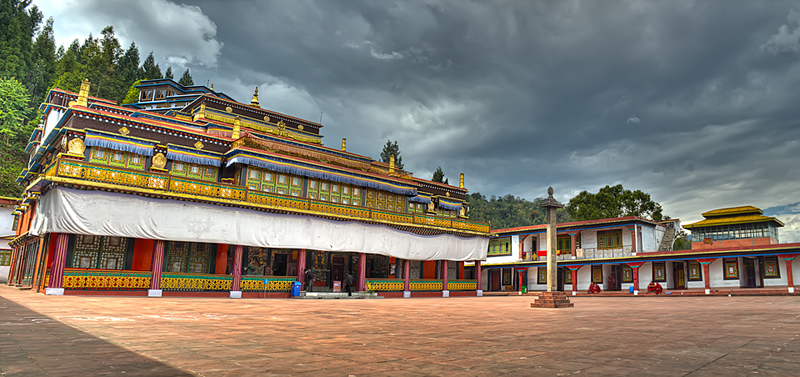


Namgyal Institute of Tibetology, opened officially on 1st October 1958, is a Tibet museum located in Gangtok. This museum was inaugurated by the Prime Minister of India, Pandit Jawaharlal Nehru. On 10th February, 1957, the foundation stone of this institute was laid by the 14th Dalai Lama.Known as the promoter of Tibetan culture, history, religion and art, this institute is home to largest collection of Tibetan works outside Tibet. In addition, this institute also has a museum, which is located on the ground floor. The museum houses a wide collection of thangkas and statues. Ancient manuscripts in different languages such as Sanskrit, Lepcha, Chinese and Tibetan are also included in the collection displayed in the museum.One of the most important items that is showcased in the museum includes the huge silver idol of Manjushri, who is the Bodhisattva of Knowledge. The treasures of this museum also include the sandalwood idols of Padmasambhava and the relics of two Ashokan missionaries, Madhyama and Kasyapagotra.The institute also houses the Tibetan Library, which is located in the main building. The library is home to one of the largest collections of Tibetan works. In addition, the library also includes more than 60,000 titles, which have been translated from original Sanskrit and Pali works to Tibetan. The books available in this library are meant for reference and no one carry these books out.

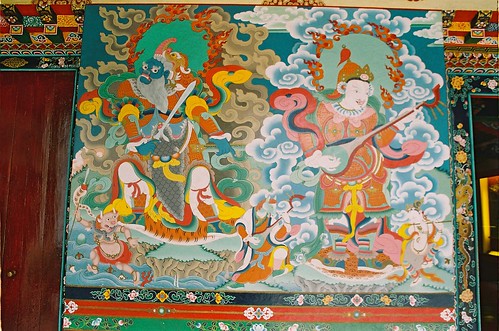
Tashiding Monastery is a Buddhist monastery. Dating back to 1641, the monastery is perched on the top of the hill located between the Rangit River and Rathong River. The monastery was founded by Ngadak Sempa Chempo Phunshok Rigzing, who belonged to Nyingma sect. However, in 1717, this monastery was renovated and extended during the reign by third Chogyal Chakdor Namgyal. In addition, the monastery is constructed on the site, which is believed to be blessed by the great Guru Padmasambhava.According to a legend, it is said that Guru Padmasambhava shot an arrow in the air so as to select the place for his meditation. The site where the arrow stroked became the place of Tashiding Monastery.At present, the monastery is encircled by chortens, traditional buildings and mani. Mani are the stone plates, which have Buddhist inscriptions inscribed on it. These stone plates are crafted by master craftsman, known as Yanchong Lodil. The 'Thong-Wa-rang-Dol' is the most significant chorten of all the chortens located around this monastery.
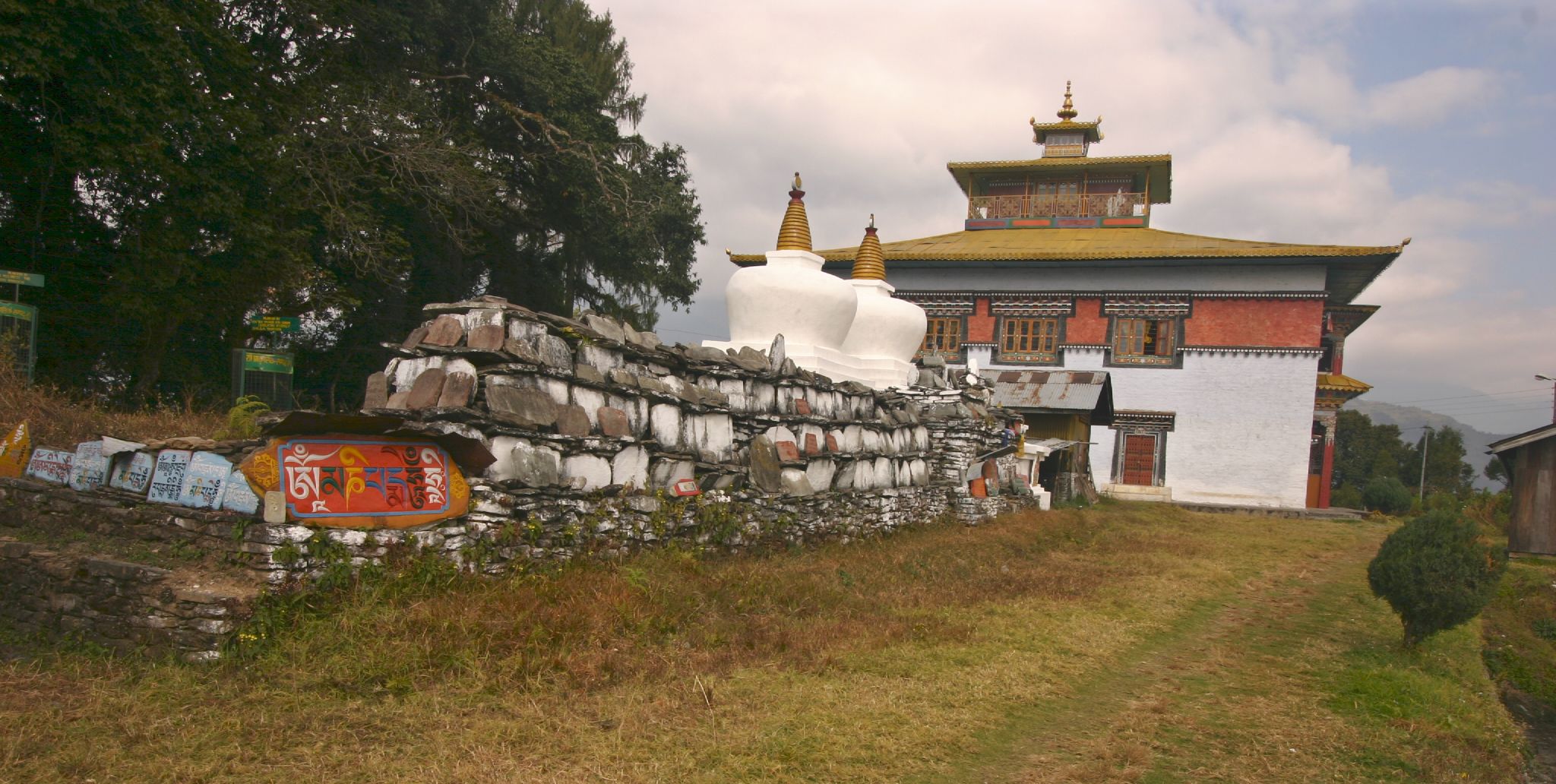



Do Drul Chorten, the biggest stupa in Sikkim, is located on the hill hock, which is adjacent to the Tibetology Institute. Popularly known as Phurba, this stupa was built in 1945. This holy stupa was under the auspices of head of Nyingma sect of Tibetan Buddhism, Trulshik Rinpoche. Built as desired by Dud-Zom Rinpoche in 1944, the stupa is girdled with 108 prayer wheels. These prayer wheels have a holy inscription engraved on it, Om Mani Padma Hum. It is said that while turning these prayer wheels, the person has to chant the mantras engraved on them.This holy stupa embraces 'Mandala' sects of 'Dorjee Phurba' and one set of 'Ka-gyur' principles along with relics and mantras. Themed out in white, the stupa is also the emblematic symbol of peace, which has a pointed golden spire erected on the top. Encircling the chorten are Chorten Lhakhang and Guru Lhakhang, which are the two behemoth statues of Guru Rimpoche (Guru Padmasambhava). Inside the stupa, tourists can see large groups of eager and young learner monks along with old lamas studying and working.



Saramsa Garden was established in 1922. The place was opened by the Forest Department, which was managed by the Forest Manager, Bhim Bahadur Pradhan from 1922 to 1954. Besides being the forester, owing to immense interest in botany, floriculture and horticulture, he was able to manage the garden well.Initially, the main purpose behind the establishment of this garden was to grow different fruits like pineapple, guava and varieties of oranges and litchie. This was done for the residence of the former British political officer and the Palace. During this time, a famous local variety of banana known as “Chini Champa” was also grown in this garden. In addition, every week, Dati, which is a decorated basket laden with fruits, was sent to British Residency and the Palace.In order to grow fruits in best possible manner and procedures, the gardener during those times, Brij Lal Subba was sent for training in fruit cultivation to Saharanpur. His descendants worked in this garden for three generations. This practice of growing fruits continued till the year 1940, until the Forest Department introduced Ipecac from Zohore (Malaysia).However, till 1970, the cultivation of ipecac was continued after which its cultivation was no longer profitable and hence, was stopped. Even though cultivation of ipecac was discontinued, this park is still famous with the name Ipecac Garden.Later in 1995, this garden was used for growing orchids of different types. Majority of additions in terms of planting different plants in this garden were introduced from 1974 till 1980. During 1990, the garden was entirely reformed into a recreational garden.



Fambong La Wildlife Sanctuary is one of the best places to observe the wild animals. Sprawling over an area of 51.76 sq km, this sanctuary is also a home to different species such as Red Panda, Himalayan Beer and Civet Cat Binturong. Dense forests of katus, bamboo, ferns, oak, champ and kimbu also occupy the sanctuary.In addition, the sanctuary also embraces plenty of rhododendrons and wild orchids. The place is also a home to different types of birds and butterflies, hence regarded as Avifauna. Due to the variance in altitude ranging from 1,280 metre to 2,652 metre, the sanctuary holds diverse flora and fauna.Tinjure is the highest point of this sanctuary that stands at an altitude of 7,000 feet. This highest point also has a wooden observation tower standing erect, which is managed by the Forest Department.


Jawaharlal Nehru Botanical Garden, established in 1987, is home to different varieties of botanical species. Located near Rumtek Monastery, this garden houses rare flowers, plants and trees including Orchids of Himalayan region. Maintained and managed by the Forest Department of the Government of Sikkim, this garden also includes dense temperate forests of Oak. There are more than 50 different varieties of tree species located inside this garden.Owing to the variance in altitude ranging between 1,800 meter and 2,200 meter a wide assortment of plants and animals is found here. In addition, a greenhouse is also constructed within the garden, where Orchids of different varieties are grown. In addition, especially for children, a small recreational center has also been made inside the garden equipped with see-saw, swings and merry-go-round.


Hanuman Tok, dedicated to God Hanuman, is one of the most renowned temples located in Sikkim. Managed and maintained by a division of Army department of India, this temple is located at a distance of 5 km from Gangtok. With a total height of 7,200 ft, from the top of this hillock, tourists can enjoy beautiful view of Gangtok town along with the nearby hills.From White Hall, located on the Gangtok-Nathula highway, this temple is situated at a distance of approximately 5 km. The 'royal cremation grounds of Lukshyama' is located in close proximity to this place. On this cremation ground, the mortal remains of family members of former Namgyal dynasty were brought to flame.



Tashi View Point constructed by the King of Sikkim.Adorned with a park on its top, this view point is one of the best places in entire Sikkim to enjoy beautiful view of Mount Kanchenjunga. In addition, the Phodong Monastery and the Labrang Monastery located on the opposite hills can also be seen from the Tashi View Point.

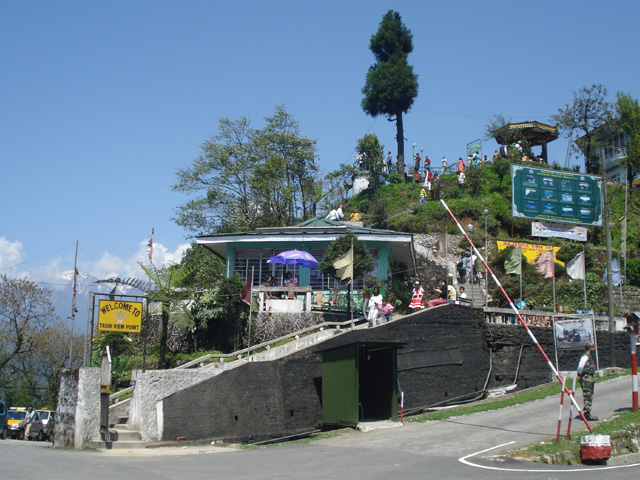

Rabdentse Ruins, destroyed by the invasions of Nepalese army, was the second capital of former kingdom of Sikkim till 1814. During the period from 1670 to 1814, the state was under the rule of king of Sikkim from this place. At present, the ruins of palaces and chortens can be seen, which are located in close proximity to Pemayangste Monastery.From the vintage point of this second capital of former Sikkim, beautiful view of Mount Kanchenjunga ranges can be enjoyed. In addition, this place has been declared as a site of national importance by the Archaeological Survey of India.


Deorali Orchid Sanctuary, located next to the Namgyal Institute, is known for its wide collection of orchids. Of 454 species of orchids, 200 species are found in this sanctuary.



Kabi Lungchok, a place of significance as the union of Bhutia chief Khey-Bum-Sar and Lepcha chief Te-Kung-Tek was ceremonially signed here. To mark the occasion, a huge stone pillar and statue was erected midst lush greenery.


Tsuk La Khang Monastery, located in the complex of Royal Palace, is the imperial gompa of the former Royal family of Sikkim. One of the major places for worship and assembly for the Buddhists, this monastery is a two storey edifice. The monastery also houses a wide collection of works of Buddhist scriptures.Earlier, this monastery was also used as a venue for several occasions such as weddings and coronations of the Sikkim Royalty. At every corner of this monastery, there are wooden sculptures which are crafted in the figure of Snow Lion's Head. On entering the building, one can witness the walls adorned with murals and altars. The altars located inside the monastery encompass the images of Bodhisattva and Buddha along with other Buddhists deities.The monastery is also a venue for several festivals that are held all throughout the year. Phang Lhabsol and Losoong are the two festivals that are celebrated in this monastery in full swing. During these festivals, mask dance also known as Chaam is performed by the monks of the monastery. In addition, during the New Year celebration, Black Hat Dance is also performed. This dance depicts the triumph of good forces over the evil forces.
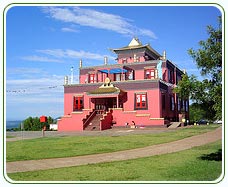
White Hill, located on a ridge in Gangtok, is a two storey architecture. The structure is named after the first British political mandarin in Sikkim, J. Claude White. Constructed in 1932, the White Hall is a permanent venue for the Flower Show held in Sikkim. During the time of flower show, several varieties of rhododendrons and orchids are displayed.


Directorate of Handicrafts & Hand-looms also known as the Government Institute of Cottage Industries, was established in 1957. Located at a distance of half km from the main market of city, the foundation of this institute was laid during the reign of the Chogyals of Sikkim. The institute was started with an aim to preserve and propagate the talent and skills of local artisans.Exceptional to Sikkim, the institute is an authentic home to traditional hand looms and handicrafts. In addition, tourists visiting the place can also see hand-woven carpets made using traditional motifs. Some of the other items available in this institute include shawls, thangka paintings, Choktse, dolls and hand-painted masks.Apart from this, items like dolls made from wood, lamp-stands, batiks, sporadic silks, brocade, dappled appliqué work and embroidered boots are also available. Sikkimese carpets and handmade paper made from bark of Algeri tree forms the speciality of this institute.There are around 100 student workers present in this institute, who are engaged in the production of cottage crafts. All the students working in the institute strictly follows the conventional rule of Sikkimese designs.

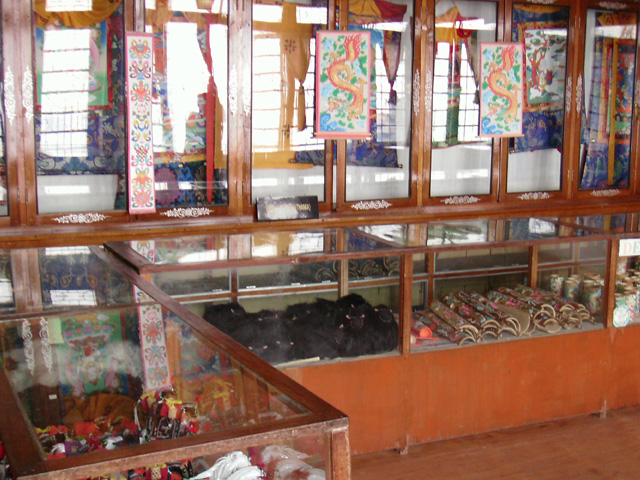
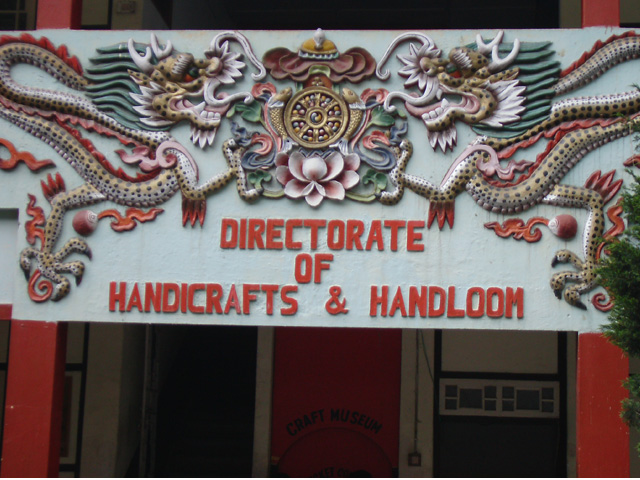
Tsuklakhang Palace, a Buddhist palatial monastery, is also known as Tsuklakhang Royal Chapel and Monastery. Located in Gangtok, this monastery is the main centre for prayers. In addition, the monastery also houses an assembly hall, which is located in the centre of the building.The Royal Chapel of Chogyals also has a wide collection of Buddhist literature and scriptures. Besides, the monastery also comprises altars which are orated with deities of Buddha, Tantric and Bodhisattvas. In addition, the monastery also serves as a venue for marriages, coronation and victory ceremonies among Sikkim royalty.
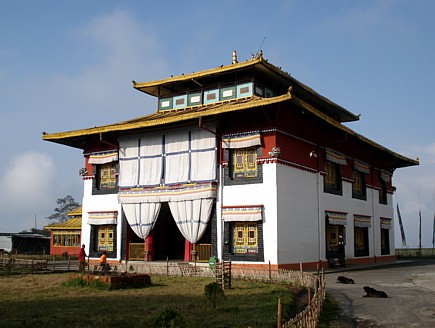

Phensong Monastery is one of the oldest. It was constructed in 1721 during the reign of Jigme Pawo and follows the Nyingmapa order of the Tibetan Buddhism. There are over 300 monks in the monastery and is one of the most visited religious places in the state. Apart from the intense religious fervor, the monastery is located midst beautiful hills and pristine natural scenic views.



The foundation stone of the Institute of Tibetology was laid in 1957 by the 14th Dalai Lama. It houses the huge collection of rare Sanskrit, Lepcha and Tibetan manuscripts, sculptures and Thankas. There are many treasured artifacts and Buddhist icons. It is also the center of Buddhist religion and philosophy. The beautiful architecture and construction of this institute is well known .

No comments:
Post a Comment